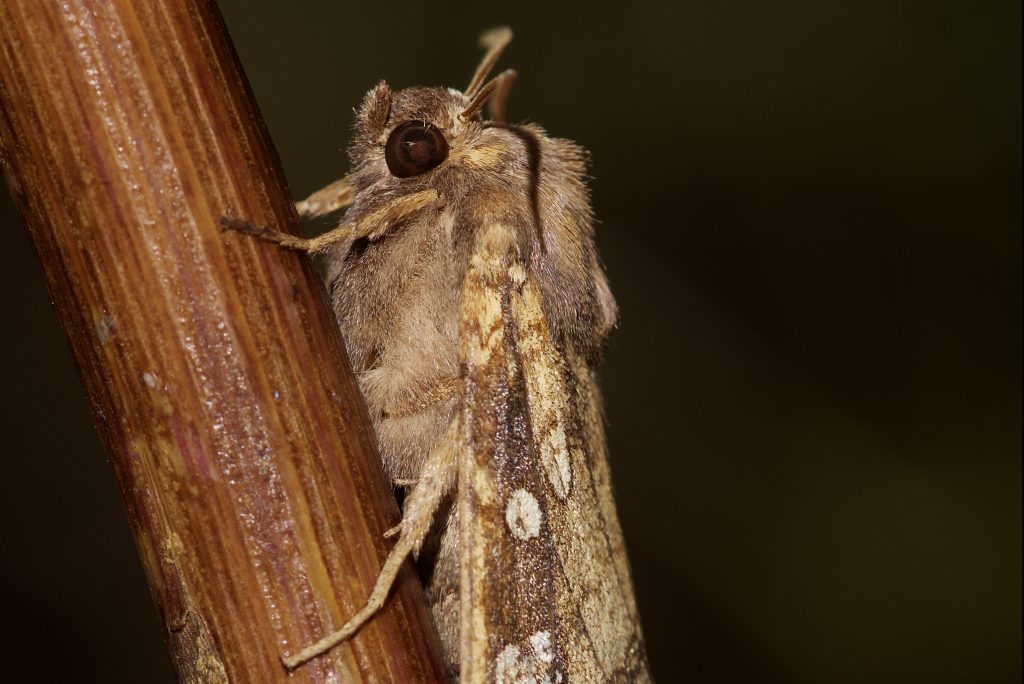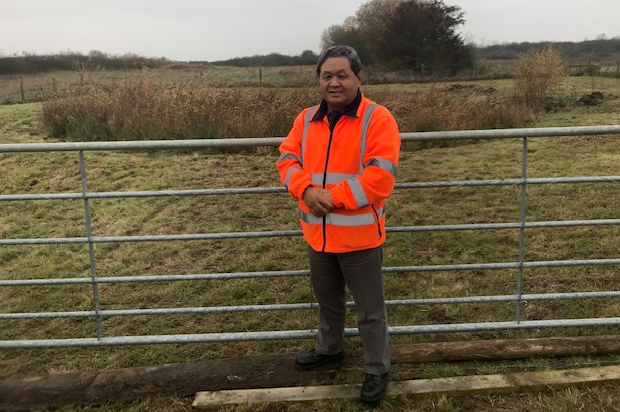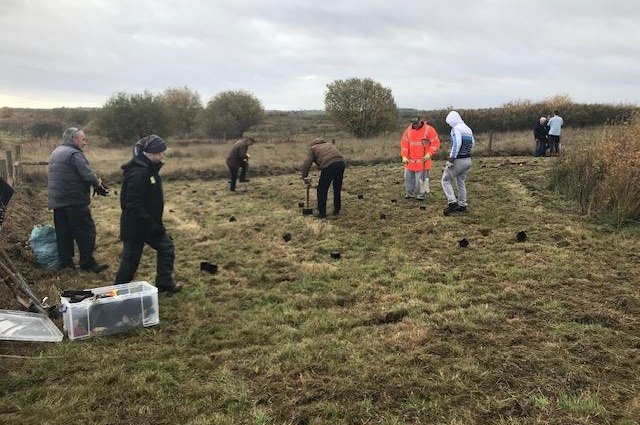
As Fingringhoe Ranges sits between the largest population of these moths located on Skipper’s Island Nature Reserve, which has a risk to flooding, and another stronghold at Abbotts Hall - the Ranges was identified as an important ‘stepping stone’ to secure the long-term future of the moth and ensure that it does not become extinct. DIO ecologist Iain Perkins worked with Natural England to select a site to plant plugs (young plants) of 250 Sea Hog’s-Fennel plants, a rare coastal plant on which the moth caterpillar feeds.

Last week, local Landmarc staff prepared the ground and delivered chicken wire. Members of Essex Wildlife Trust; the Fingringhoe Training Safety Marshall (TSM); Sven Wair, a member of Colchester Conservation Group; Landmarc staff and community payback workers from Essex Probation Services raked and collected grass cuttings and installed extra fencing to prevent the local rabbit population from grazing on the plants. With the help of Essex Wildlife Trust, who have been growing the plants over the past year, Natural England, the TSM and local community payback workers successfully planted the plugs for the plants.

With a management plan, written by Zoe, and the support from the local Landmarc staff who have adopted this small but important project the future is looking positive for this rare moth – but only time will tell.
2 comments
Comment by Jennifer posted on
The Essex & Suffolk Hunt were hunting in this p[recious area yesterday, 30 hounds trampling through the grass
Comment by DIO Communications Team posted on
Hi Jennifer, sorry for the delayed reply. If you suspect illegal activity has taken place, please report to the police.